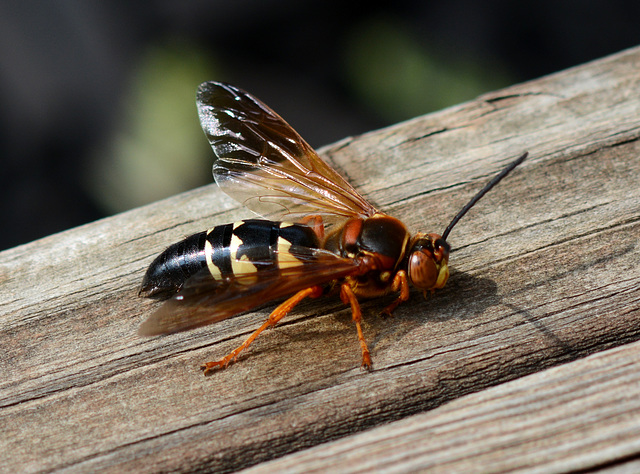Eggs, day 7
Oddly green pink-edged sulphur
Fly prefers the purple one
Why manual focus is better
Hooverfly
The dreaded horsefly
Egg watch day 8: an experiment
Morning rebuild
Rainbow connection . . .
Ghostly countenance
Spider day continues
A Japanese beetle scrum
Looks like what a bird left behind
Egg watch, day 9: subtle changes
Egg watch, day 10: Hatchery?
Nervous red wasp on glass
Streamlined, flying grasshopper
Dangling from a hickory tree
Networking
Dinky fly and extraordinary luck
The kisser of the spider woman
Egg watch, day 13: more subtle changes
An unusual variation
An unremarkable fly
Crab spider on a web
Fly disguised as owl
What goes on here?
Playing around after a rainstorm
After a morning rain
Day 5: something new
Hopper to go, hold the flies
Red velvet mite vs. something
Marmorated stink bug
It's pretty clearly a wasp
Like cattle in a field
Leopardoptera
Hoveringfly
World in a web 7: Away with its prize
World in a web 6: The head is the delicacy
World in a web 5: Checking for ripeness?
World in a web 4: No, the ant is here on business
World in a web 3: the proprietress
World in a web 2: What's an ant doing here?
World in a web 1: All the web's a stage
Daddy longlegs
See also...
Keywords
Authorizations, license
-
Visible by: Everyone -
All rights reserved
-
225 visits
Friendly neighborhood cicada killer


This is the largest wasp found around here -- to get a sense of its size, that's a 2x4 (actually, 1.5x3.5-inch) board it's resting on.
They're normally docile, unless it's a female and you're a cicada, or it's a male and you're another male cicada killer. The females sting, and have an impressive stinger to prove it; the males don't sting -- couldn't if they wanted to. I think that this is a male, but am not certain. Getting down to less than a foot from it helped me improve my technique of moving very slowly. For those keeping score, it is Sphecius speciosus.
They're normally docile, unless it's a female and you're a cicada, or it's a male and you're another male cicada killer. The females sting, and have an impressive stinger to prove it; the males don't sting -- couldn't if they wanted to. I think that this is a male, but am not certain. Getting down to less than a foot from it helped me improve my technique of moving very slowly. For those keeping score, it is Sphecius speciosus.
(deleted account) has particularly liked this photo
- Keyboard shortcuts:
Jump to top
RSS feed- Latest comments - Subscribe to the comment feeds of this photo
- ipernity © 2007-2025
- Help & Contact
|
Club news
|
About ipernity
|
History |
ipernity Club & Prices |
Guide of good conduct
Donate | Group guidelines | Privacy policy | Terms of use | Statutes | In memoria -
Facebook
Twitter

Sign-in to write a comment.